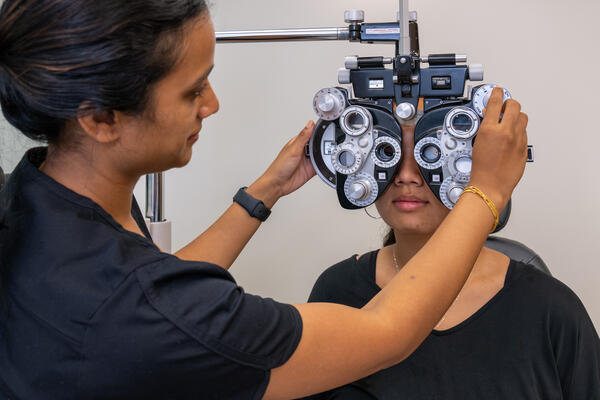The Pros and Disadvantages of Various Refractive Surgeries for Enhanced Eyecare

LASIK Surgery
LASIK surgical treatment is a typically executed refractive procedure that intends to fix vision issues such as farsightedness, nearsightedness, and astigmatism. During the procedure, a slim flap is produced on the cornea, and a laser is made use of to reshape the underlying cells, dealing with the refractive mistake.
One of the main benefits of LASIK surgical treatment is the fast improvement in vision experienced by lots of people. It is important for individuals considering LASIK surgery to go through a thorough analysis by an eye care expert to identify if they are suitable candidates for the treatment.
PRK Procedure
The PRK treatment, also recognized as Photorefractive Keratectomy, is a type of refractive surgical treatment that aims to remedy vision issues similar to LASIK surgical procedure. Unlike LASIK, which involves developing a flap in the cornea, PRK functions on the surface area layer of the cornea.
One of the advantages of PRK over LASIK is that it gets rid of the risk of flap-related complications given that no flap is developed throughout the surgery. In spite of the longer recovery duration, PRK can be an ideal choice for people seeking vision modification surgical procedure.
SMILE Surgical Treatment
A sophisticated refractive surgery technique gaining popularity in the area of ophthalmology is SMILE Surgical treatment. Little Incision Lenticule Extraction (SMILE) is a minimally invasive treatment that fixes vision by reshaping the cornea using a femtosecond laser. Unlike typical LASIK surgical procedure, SMILE Surgical treatment entails developing a little laceration in the cornea to extract a lenticule, which leads to less interruption to the corneal structure and potentially much faster recovery times.
One of the key benefits of SMILE Surgery is its capacity to deal with myopia (nearsightedness) and astigmatism with high accuracy, resulting in exceptional visual results for people. The minimally invasive nature of the treatment also reduces the threat of issues such as dry eye disorder, making it a positive option for try this out individuals seeking refractive surgical procedure.

LASEK Technique
Having discovered the benefits and considerations of SMILE Surgical treatment, an additional significant refractive surgery method worth analyzing is the LASEK Strategy. LASEK, which stands for Laser-Assisted Subepithelial Keratectomy, is a form of laser eye surgical procedure Home Page that aims to fix refractive mistakes such as myopia (nearsightedness), hyperopia (farsightedness), and astigmatism.
Unlike LASIK, LASEK does not entail developing a corneal flap. Rather, during a LASEK procedure, the cosmetic surgeon uses a diluted alcohol solution to loosen up the slim outer layer of the cornea, recognized as the epithelium.
Among the key benefits of LASEK is that it can be appropriate for people with thin corneas that may not be excellent candidates for LASIK. Furthermore, LASEK normally leads to marginal post-operative pain and a quicker healing time compared to PRK. The visual recovery procedure with LASEK might be a little longer than with LASIK.
Implantable Call Lenses
Implantable Call Lenses supply a long-lasting vision correction service for individuals seeking an option to standard contact lenses or glasses. These lenses, likewise called phakic intraocular lenses, are surgically put right into the eye to deal with refractive errors such as myopia (nearsightedness), hyperopia (farsightedness), and astigmatism. eye doctors in andalusia. Unlike standard contact lenses that remain on the surface of the eye, implantable contact lenses function within the eye itself, providing clear vision without the demand for everyday upkeep or removal
One of the key benefits of implantable call lenses is their permanence. When put, they can remain in the eye indefinitely, using consistent and secure vision improvement. Additionally, these lenses can be an outstanding alternative for individuals who are not good prospects for laser eye surgery or who choose a reversible vision modification treatment.
Nonetheless, implantable contact lenses do bring some threats, consisting of the possibility for cataracts or enhanced eye stress. It is crucial for individuals considering this choice to talk to an eye treatment expert to figure out if implantable contact lenses are the right selection for their specific demands and eye wellness.
Conclusion
In verdict, each type of refractive surgery has its very own benefits and drawbacks. LASIK surgery is preferred for its quick recuperation time, while PRK procedure may be suitable for people with slim corneas.

Generally, SMILE Surgical procedure presents an appealing alternative for people looking to enhance their vision with refractive surgical treatment.